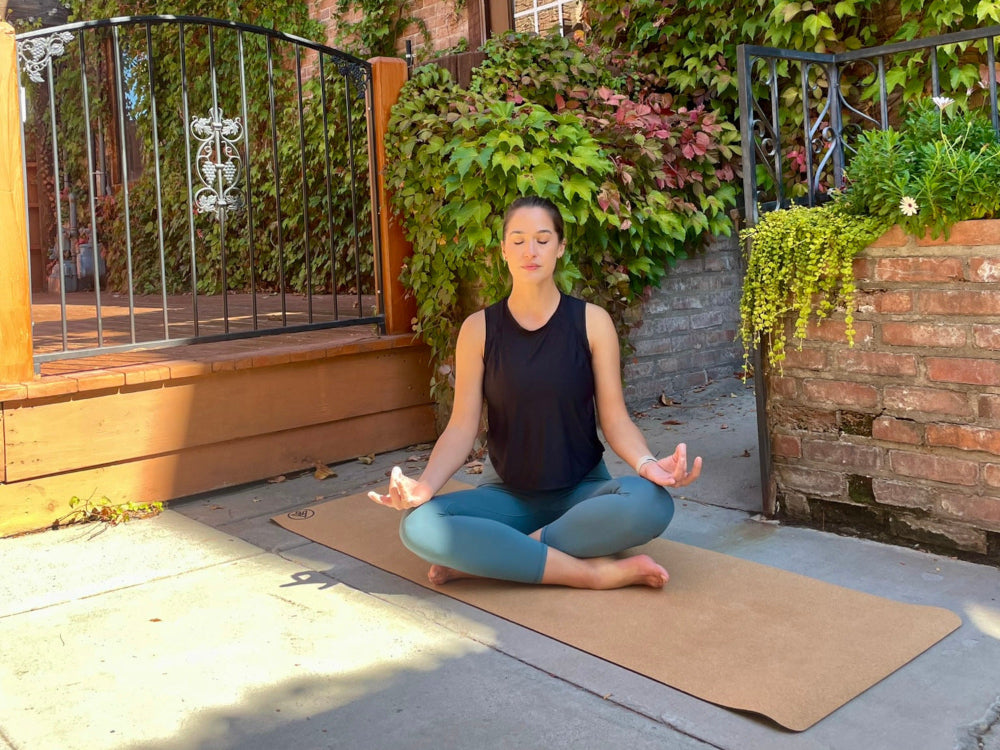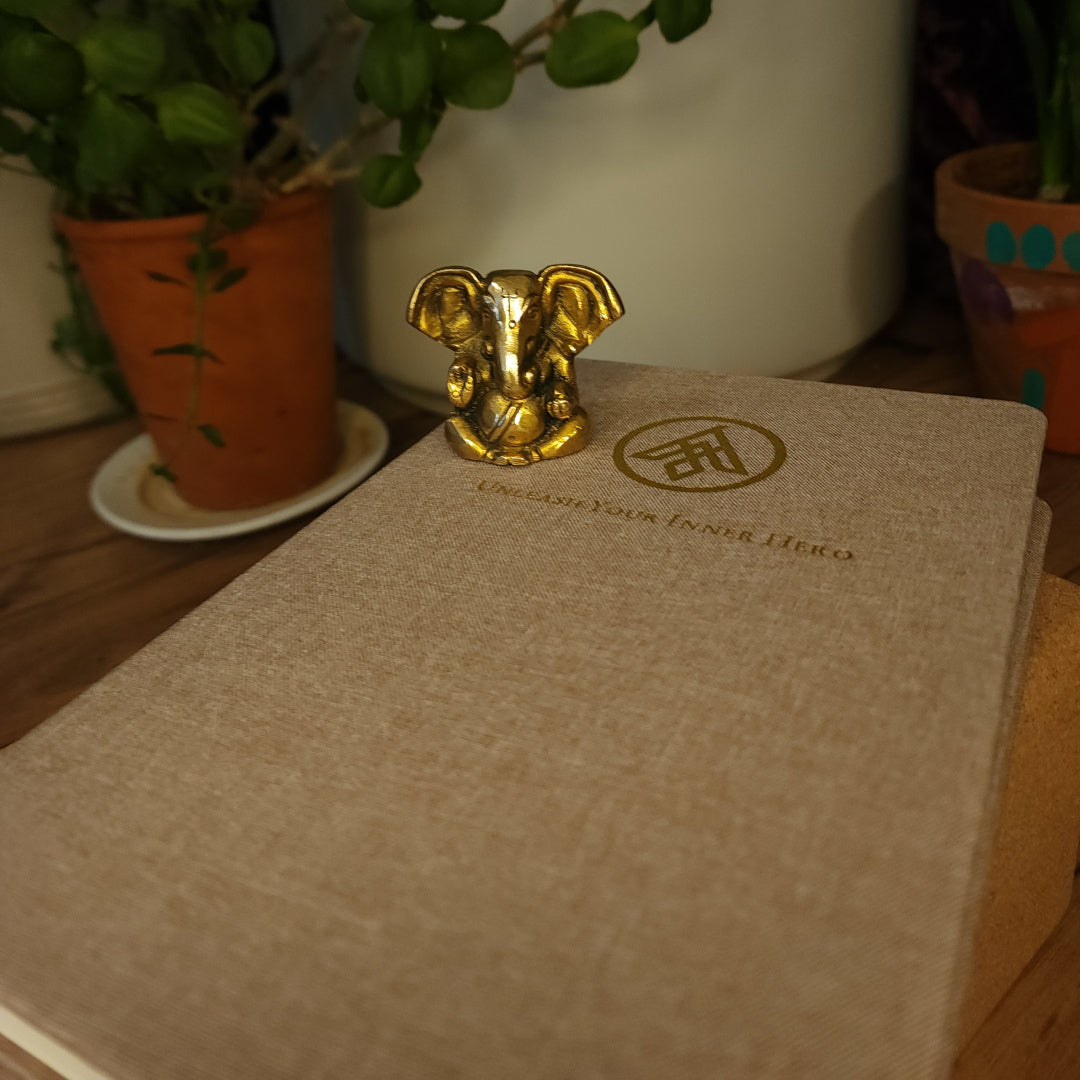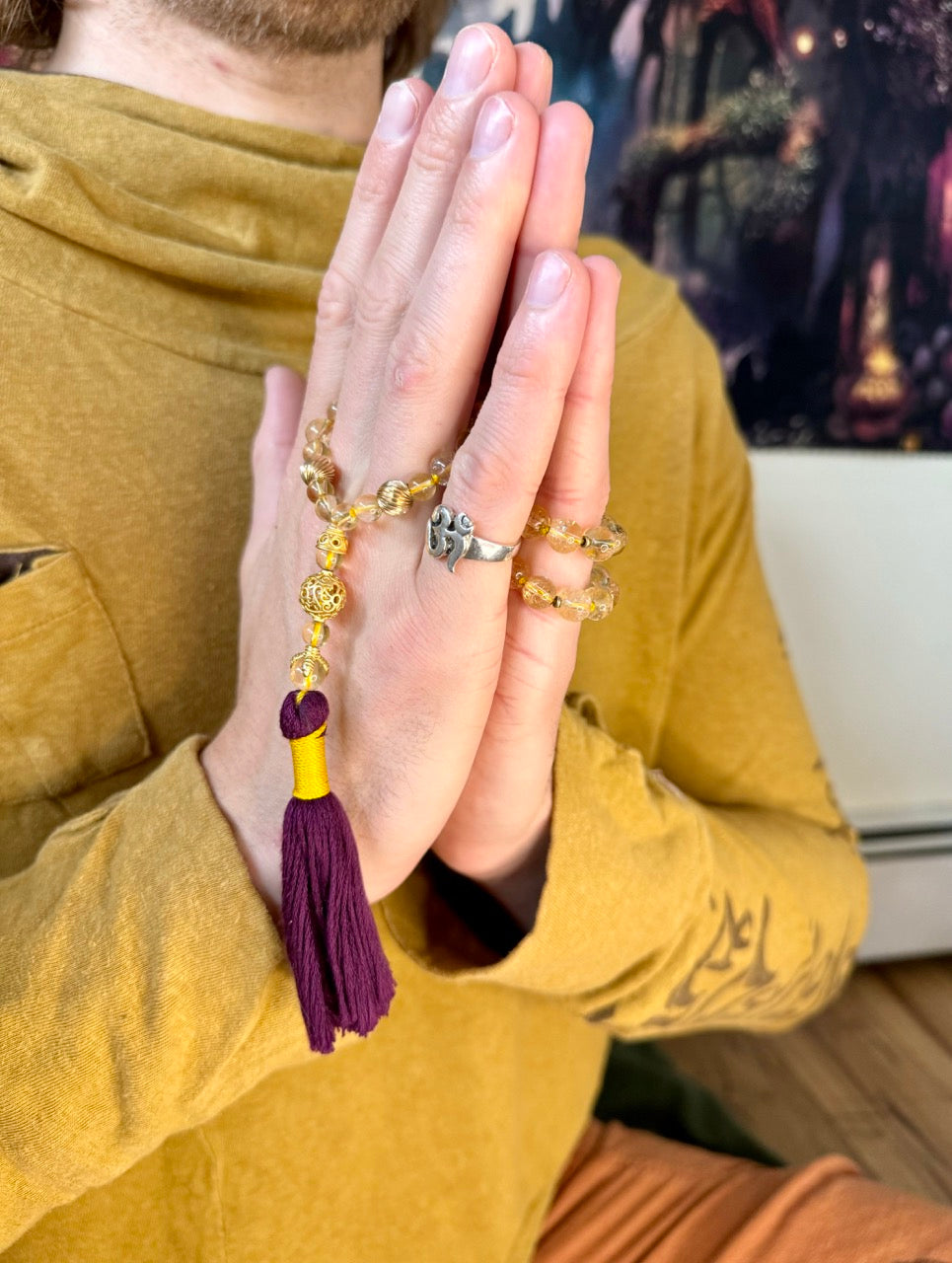
Ganesha Mudra - Gesture of Ganesh
Jack UtermoehlShare
Ganesha Mudra invokes the protective, discerning energy of Gaṇeśa, the elephant-headed deity of new beginnings, wise action, and obstacle-clearing presence. In yogic tradition, Ganesha is not only a god but a universal symbol of new beginnings, remover of obstacles, and the courage to walk a new path.
This mudra embodies those same qualities, focusing energy at the solar plexus to support inner stability and visionary strength.
Sometimes called Ganesh Mudra, this gesture creates a focused seal across the core of the body, channeling strength inward. It facilitates digestion, discernment, and the clear direction needed to bring plans and projects into form.
The gesture helps the practitioner embody wise leadership from the inside out with steadiness, humility, and heart.
Sanskrit Name: Ganesha Mudrā – गणेश मुद्रा
English Translation: Gesture of the Elephant Deity
Alternate Name: Mudra for New Beginnings
Phonetic Spelling: guh-nay-sha moo-drah
Ganesha Mudra activates the body’s inner resolve by engaging the solar plexus, the seat of personal power, will, and clarity.
It nourishes samana vayu, the integrating energy that supports healthy digestion and inner balance, and also enhances apana vayu, helping release what no longer serves.
This combination makes the mudra especially useful when embarking on new endeavors, releasing outdated habits, or grounding intention into action.

Instructions to Perform Ganesha Mudra
Begin seated in a stable posture such as vajrasana (hero's pose) or sukhasana (easy pose). Let the spine rise naturally while grounding through the hips and legs.
Hand Position: Interlace the fingers outward, with the right thumb on top. Extend the middle fingers forward while wrapping the index fingers around them. Join the thumbs side-by-side, lengthwise, resting on top of the middle fingers.
Placement: Rest the wrists at the solar plexus, just below the sternum, with the elbows held slightly away from the body.
Breathing Technique: Practice slow, intentional breathing. Inhale into the belly, exhale steadily through the nose. Allow each breath to settle you deeper into your intention.
Duration: Practice for 2 minutes, especially before setting intentions or beginning something new.
Benefits of Ganesha Mudra
This mudra brings a sense of steady inner strength and promotes the ability to move forward without rushing.
It aids both digestive and emotional assimilation helping us transform experience into wisdom.
Physical Benefits: Stimulates the digestive fire, supports abdominal function, and relieves tension in the diaphragm and solar plexus region.
Mental Benefits: Sharpens discernment, grounds decision-making, and fosters clarity in times of transition.
Emotional Benefits: Builds confidence and courage. Offers protection and stability during emotionally vulnerable moments.
Spiritual Benefits: Aligns intention with action. Connects to Ganesh as the archetype of protection and wise beginnings.
Elevate Your Mudra Practice
Capture your insights and deepen your connection with our Yoga Journal.
Symbolism and Meaning of Ganesha Mudra
Ganesha is more than a deity, he is the symbolic embodiment of living wisely. His wide ears listen deeply. His trunk clears the path ahead. One foot rooted and one foot lifted symbolizes the balance between earthly responsibilities and spiritual progress.
This mudra reflects those qualities. The overlapping fingers show integration of strength and humility. The joined thumbs express focused direction. Holding it over the solar plexus awakens our own capacity to listen, act, and transform.
Unlike outward-facing gestures, Ganesha Mudra draws inward. It seals energy to purify and organize it toward purpose. When practiced with presence, it becomes a guardian of the threshold, an inner commitment to clarity in intention and purpose before stepping forward.
When to Practice Ganesha Mudra
This mudra is ideal at the start of a new project, transition, or personal cycle. Use it to:
- Prepare for major decisions or life changes
- Support healthy digestion and release of toxins
- Cultivate confidence, discipline, and trust in new beginnings
- Invoke a grounded connection to your path and purpose
Suggested practice duration: 2 minutes, especially during morning rituals, pre-intention setting, or transitional seasons.
Contraindications for Ganesha Mudra
This is a safe gesture for most practitioners, though those with sensitivity or discomfort in the hands or wrists may consider the following:
- If tension arises, reduce the duration or soften the grip
- Practice with hands closer to the navel if holding at the solar plexus causes discomfort
- Use Surya Mudra as a substitute if needed
Additional Insights on Ganesha Mudra
Affirmations: “I am protected as I begin anew.” / “I listen, trust, and move forward with clarity.”
Visualization: Imagine Gaṇeśa standing beside you at the gate of a new beginning. With each inhale, feel his steadiness. With each exhale, release what no longer serves. Visualize a golden path opening ahead.
Associated Chakras: Manipura (Solar Plexus) for strength, will, and wise action.
Paired Asanas: Vajrasana or any forward-facing posture with an open belly and engaged core.
Related Pranayama: Sama Vritti (equal breath) or extended exhale practices for grounding and focus.
Meditation Techniques: Intention setting, journaling meditation, or silent prayer invoking protection and purpose.
Variations and Modifications
Hand Placement: While traditionally held at the solar plexus, you may lower it to the navel or raise it to the heart if that feels more intuitive or supportive.
Adaptations: Sit with back supported if you feel tension in the spine. You may also practice this mudra lying down with the hands resting lightly on the upper belly.
—— ॐ ——

Personal Insights
Ganesh as the remover of obstacles also places those obstacles in the way like bumpers at a bowling alley.
He helps us navigate, understand when to pay attention, and to know when to commit to an action.
In this way, he shows us that life isn't about constantly moving or pushing through obstacles but rather observing what's actually happening and only once we have keenly perceived the situation, move forward.
There is no rushing Ganesh, who rides a mouse. And when we understand that the mouse represents our scattered and anxious mind and we let Ganesh ride upon our own mind, then we will see that there really are no obstacles.
They were always just a fabrication of our own mind.











